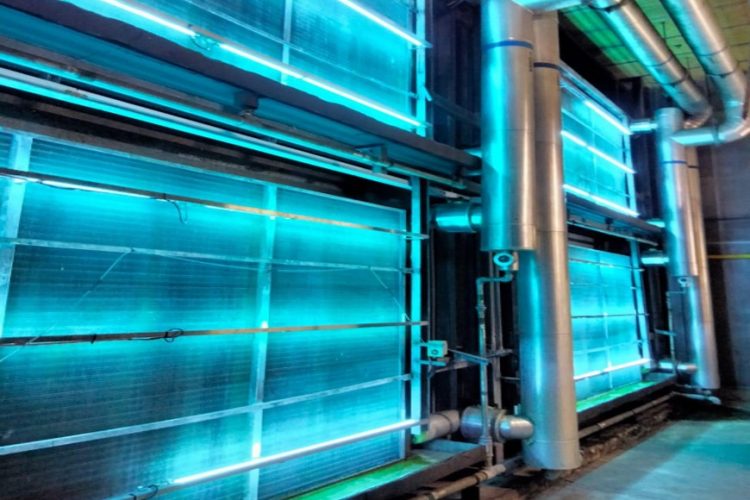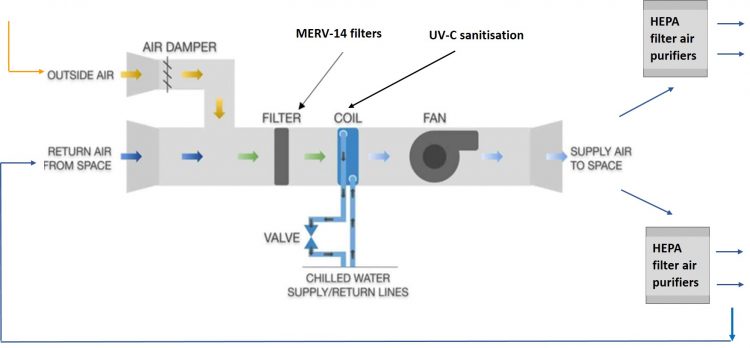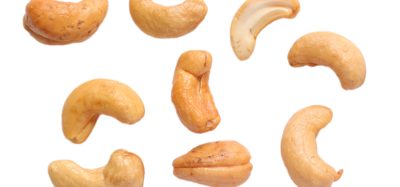Changi Airport deploys new technology for cleaner air in passenger terminals
- Like
- Digg
- Del
- Tumblr
- VKontakte
- Buffer
- Love This
- Odnoklassniki
- Meneame
- Blogger
- Amazon
- Yahoo Mail
- Gmail
- AOL
- Newsvine
- HackerNews
- Evernote
- MySpace
- Mail.ru
- Viadeo
- Line
- Comments
- Yummly
- SMS
- Viber
- Telegram
- Subscribe
- Skype
- Facebook Messenger
- Kakao
- LiveJournal
- Yammer
- Edgar
- Fintel
- Mix
- Instapaper
- Copy Link
Posted: 24 September 2021 | International Airport Review | 1 comment
Changi Airport has installed new innovative technologies to improve the air quality in its passenger terminals, in order to prevent the spread of the more transmissible COVID-19 variant.


Credit: Changi Airport
As international borders start to reopen, Singapore Changi Airport (SIN) has put in place a multi-faceted approach to keep the more transmissible COVID-19 variant at bay. Changi has deployed innovative technologies to enhance the indoor air quality in its terminal buildings, as well as put in place the segregation of airport workers according to their risk of exposure.
Clean indoor air is vital for infection control to mitigate the spread of viruses via airborne particles and droplets. The air-conditioning and mechanical ventilation systems in Changi’s terminals are installed with different layers of filters – namely the upgraded MERV-14 and Ultraviolet-C sanitisation equipment – to sieve out pathogens of different sizes in the air flow passage. In more contained spaces where passengers and staff dwell, these areas are supplemented with air purifiers fitted with hospital-grade High-Efficiency Particulate Air (HEPA) filters.
Even before the COVID-19 pandemic, the ventilation systems in the airport’s passenger terminal buildings, which are designed with an airy ambience by having high ceilings and wide-open spaces, are calibrated to completely refresh the indoor air every six to 10 minutes. For washrooms, the air change takes place even more frequently, every three minutes. This is more frequent than the recently updated national guidelines to improve building ventilation and indoor air quality.


Credit: Changi Airport – Infographic depicting sanitised air flowing through Air Handling System/AIr Handling Unit in Changi’s terminals.
Effective removal of COVID-19 with upgraded Minimum Efficiency Reporting Values (MERV) filters
Since the onset of COVID-19, the air-conditioning system filters across the passenger terminals have been upgraded from MERV-7-rated models to MERV-14-rated ones. These higher grade filters can effectively remove about 85 per cent of the particles of 0.3 to 1.0 micrometres in size in the air, smaller than the size of a COVID-19 particle in a respiratory droplet.
To ensure the MERV-14 rated filters continue to operate at effective efficiency, they are replaced every one to two months, depending on the condition of use. All used filters are sealed for proper disposal by maintenance workers donning the highest level of personal protective equipment (PPE) for safe handling.
In addition, fresh air intake for the air-conditioning systems have also been maximised by fully opening the dampers to admit outdoor air.
Ultraviolet-C sanitisation kills remnant virus traces
As a further layer of protection, Changi Airport is installing Ultraviolet-C (UV-C) sanitisation equipment in Air-Handling Stations (AHS) and Air-Handling Units (AHU) progressively across all terminal air-conditioning systems. The UV-C kills any remnant virus traces in the mixture of fresh and returned air passing through the cooling coil, providing a second level of defence after the MERV-14 rated filters. The first round of such installations will be completed this month at selected AHSs and AHUs, which supply air to mission-critical control rooms and higher risk zones.
In more contained spaces, such as transfer holding areas, staff canteens and food courts, staff rest areas in the new segregated zones across the terminals and at health scanning stations, portable air purifiers with hospital grade High-Efficiency Particulate Air (HEPA) filters have been installed. This is to further mitigate the risk of airborne transmission of the COVID-19 virus.
This increased protection means that, after the air in the terminals has been scrubbed by the MERV-14 filters, the portable air purifiers with HEPA filters further cleans air distributed into the building interiors, removing more than 99 per cent of any remaining particles. Depending on the air purifiers’ capacity, it takes just three minutes to clean the air in an area about the size of a two-room flat.
Low carbon dioxide levels, high indoor air quality
Changi Airport Group (CAG) worked closely with health agencies and performed several smoke diffusion tests to ascertain that the design of the indoor air flow does not contribute to any adverse movement of air from higher risk to lower risk zones. For quality assurance, CAG also conducts regular checks on indoor air quality, including measuring CO2, air pollutants, humidity, temperature and flow rates.
With these multi-layers of protection in place, the CO2 level in Changi Airport’s terminals remain constantly low, at less than 500 ppm (parts-per-million). This is nearly 30 per cent better than the allowable CO2 level stipulated in the Code of Practice for Indoor Air Quality. Hence, visitors can be assured of good ventilation and higher quality indoor air every time they use Changi Airport.
Related topics
Airport development, COVID-19, New technologies, Passenger experience and seamless travel, Safety, Terminal operations, Workforce



















Thanks for sharing this. I didn’t know indoor plants can be that much useful.